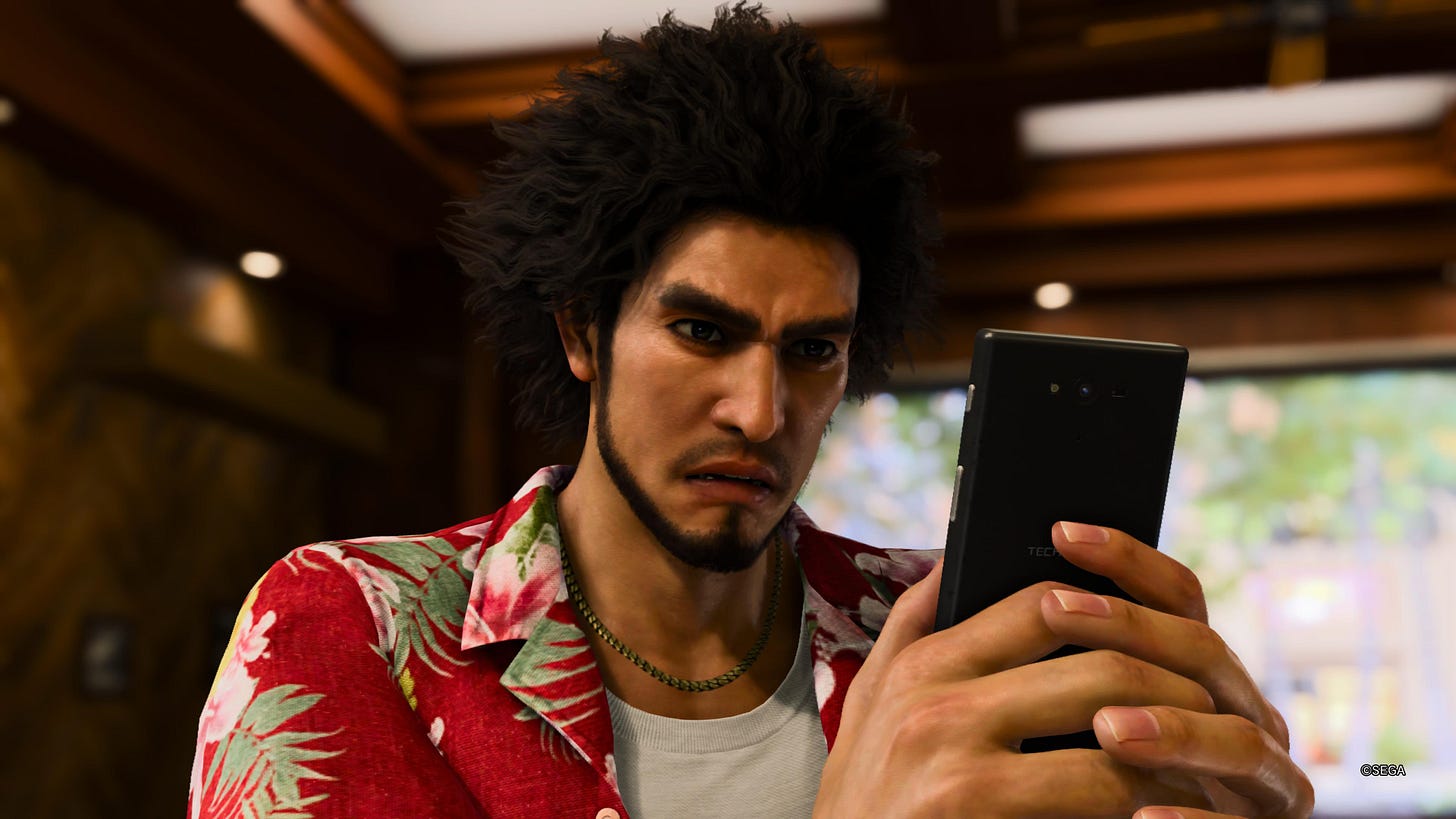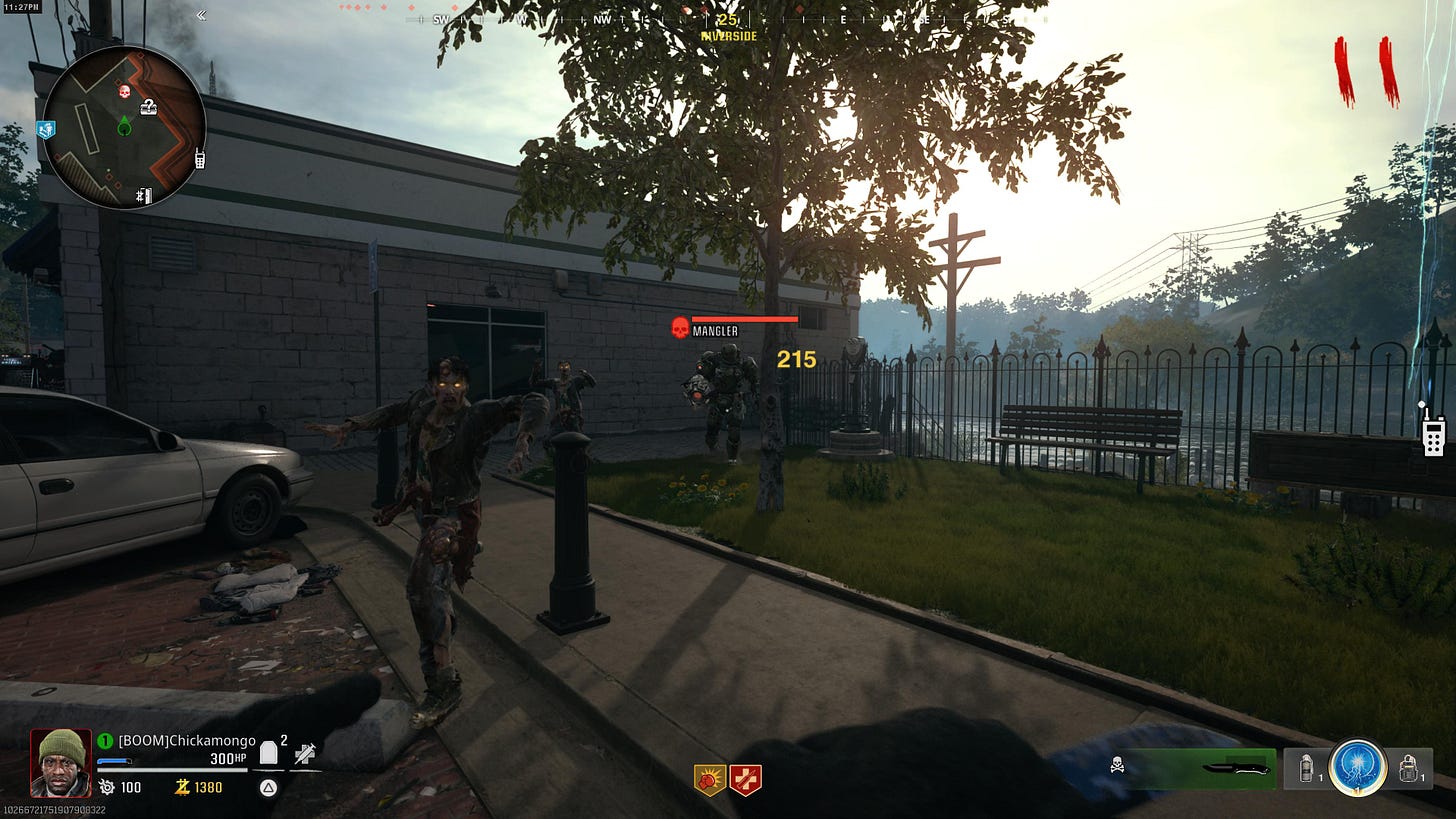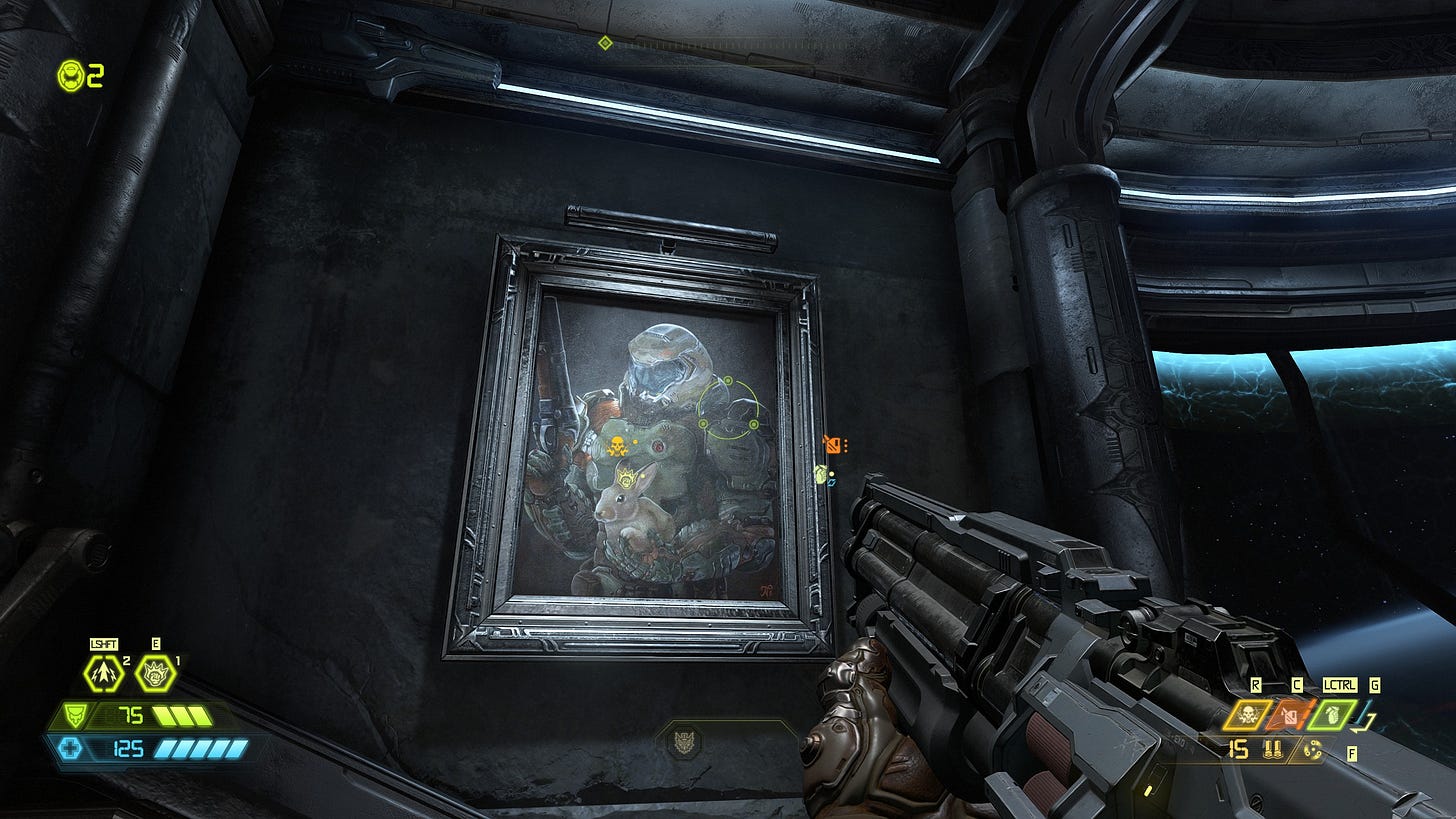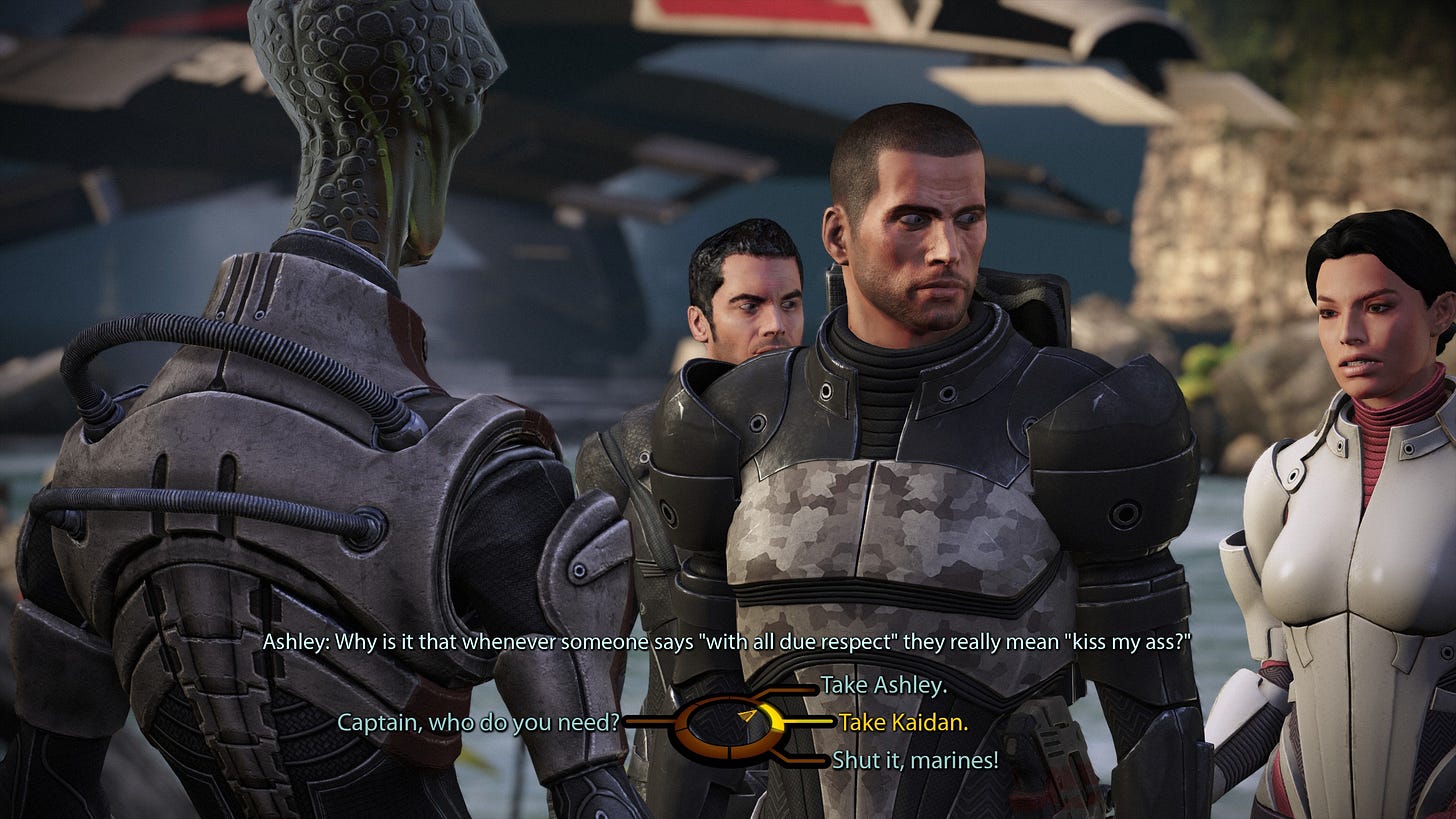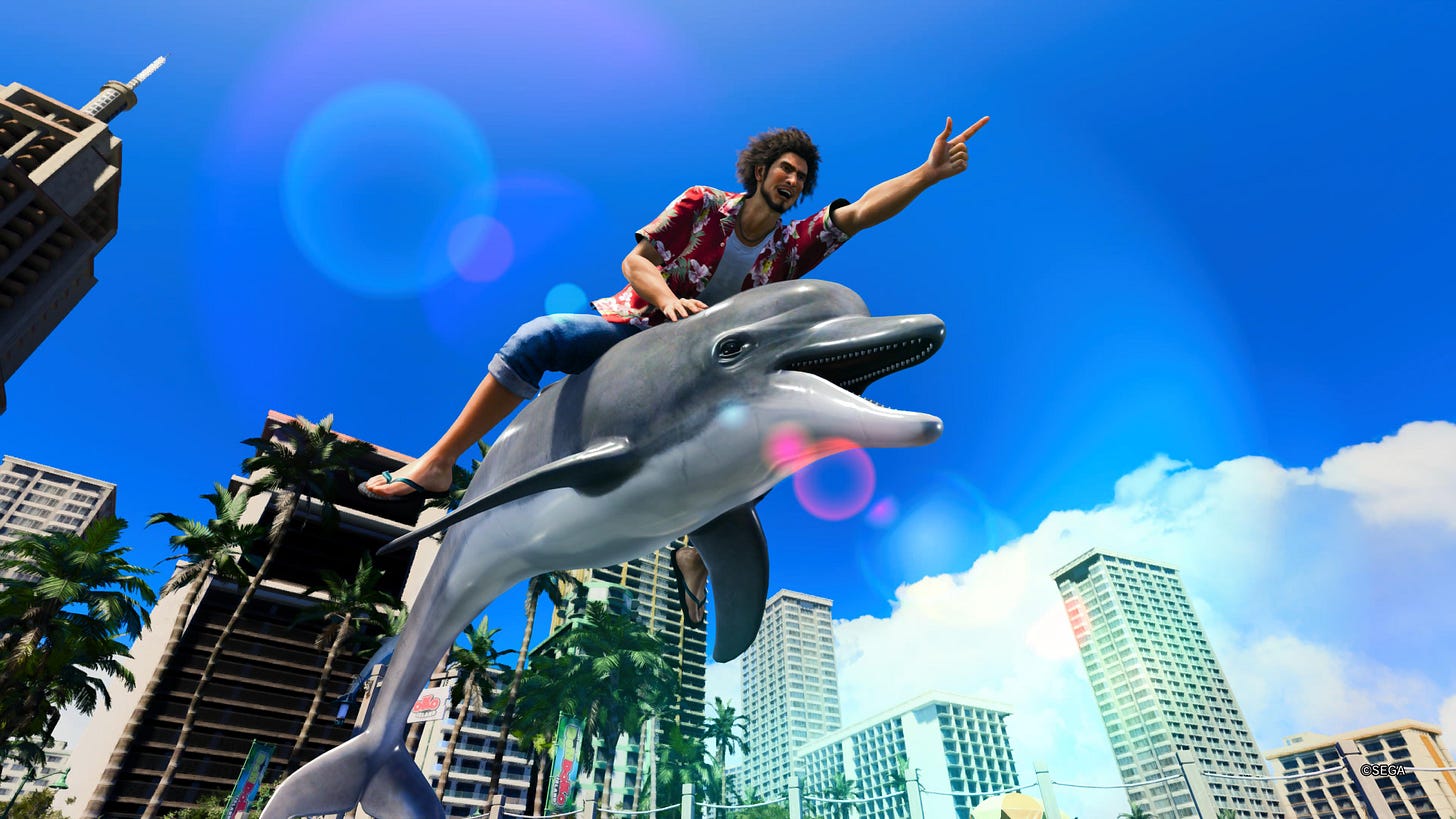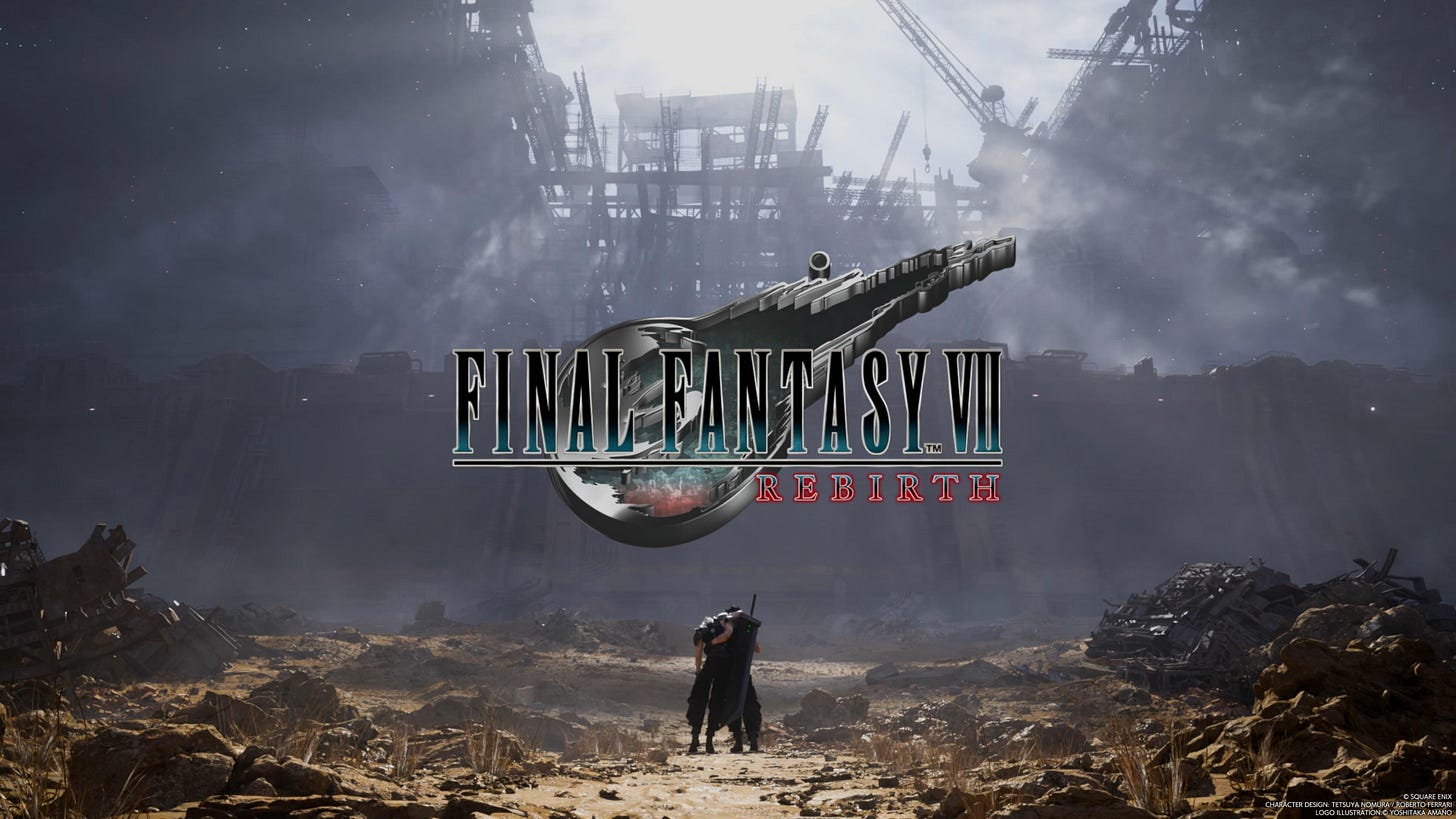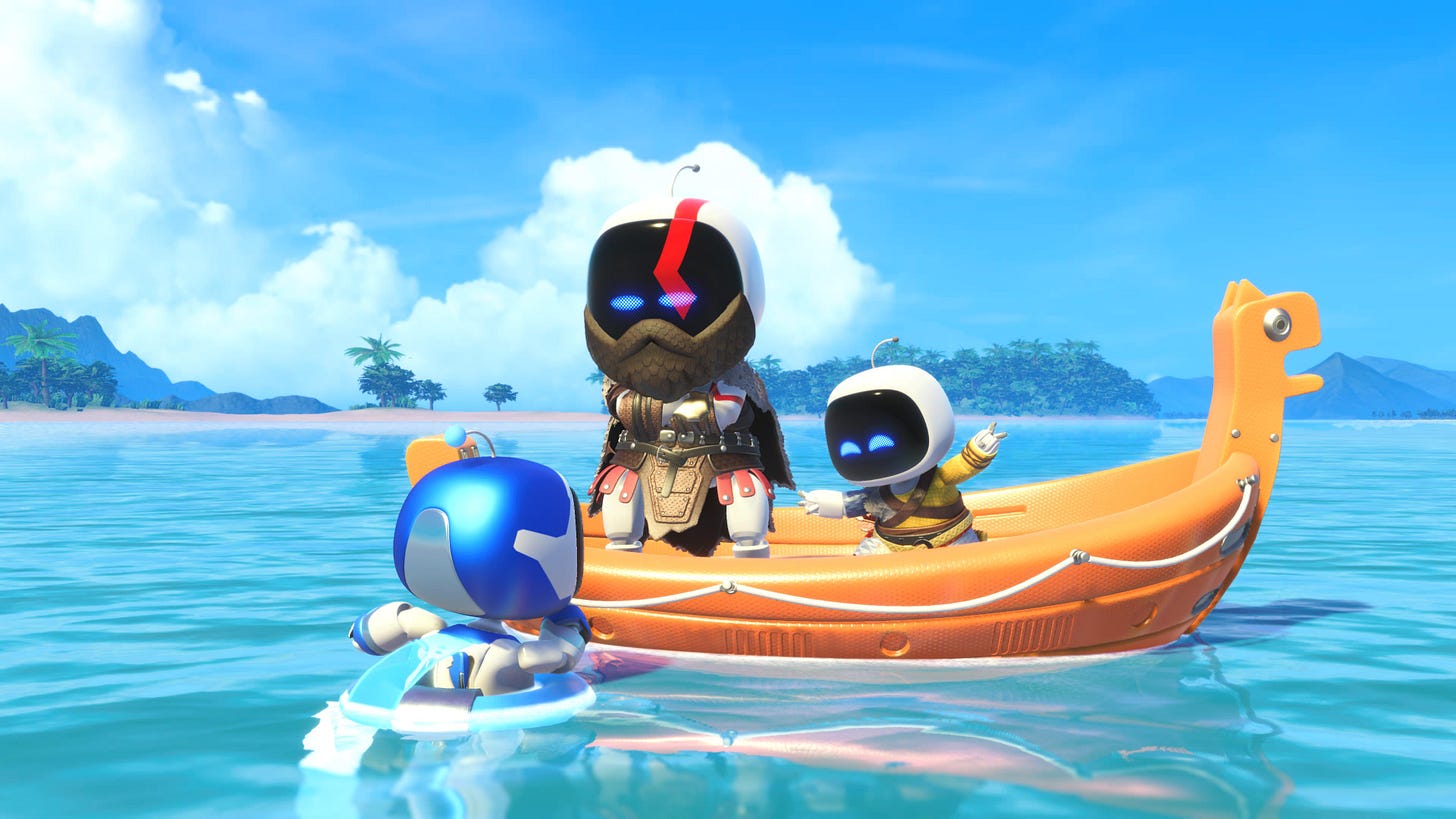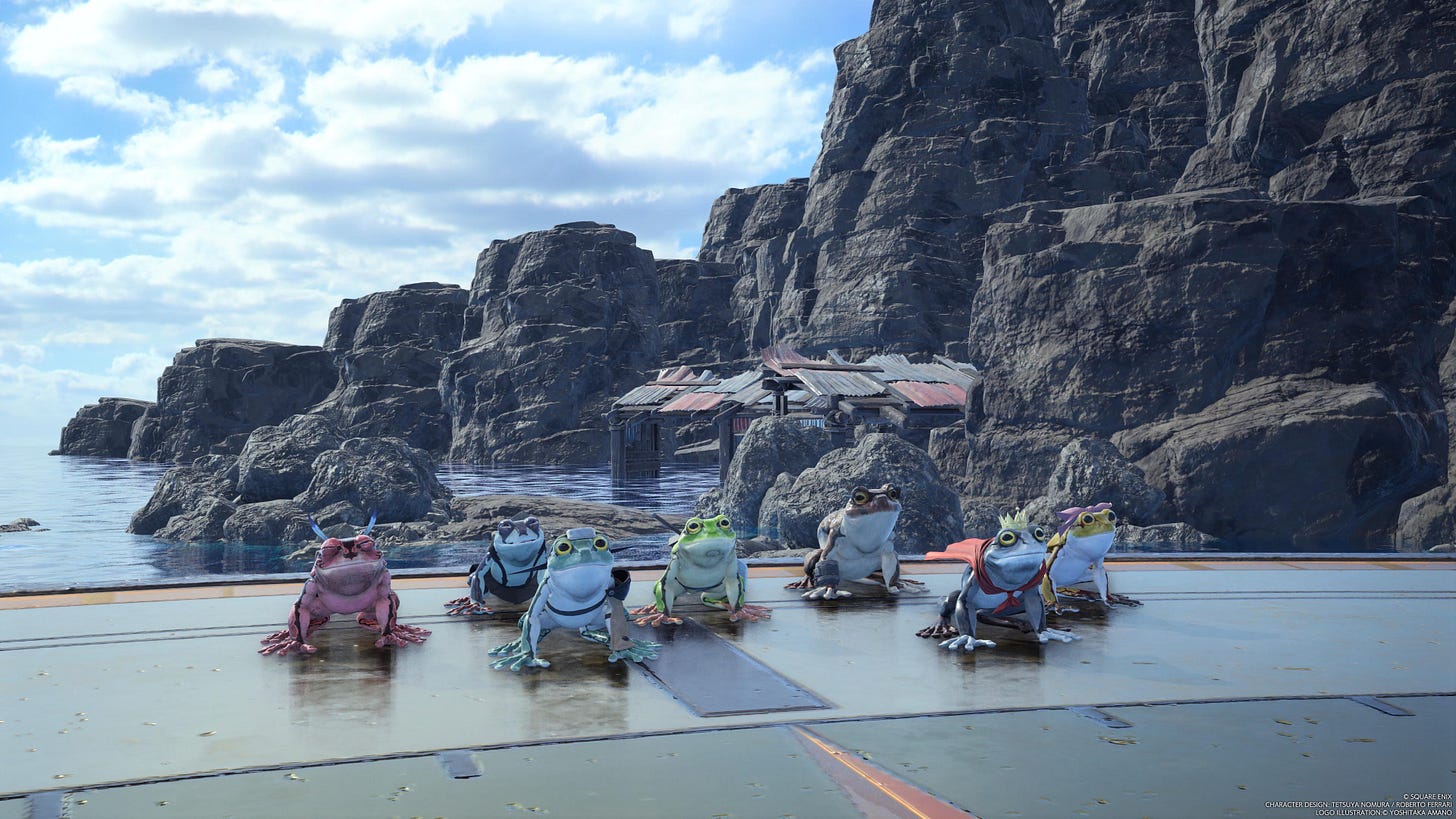My favorite games of 2024
Blasts from the present and past
Good news: a lot of awesome video games came out this year. Bad news: I didn’t have time to play them all. Great news: I still played a lot of games, some of which released before this year. And it’s your turn to hear about games you might have missed or are looking to play.
A good chunk of the games on this list are releases from this year, but a lot of the games I played were titles from before 2024. I’m one man with limited time, unfortunately, meaning I didn’t get to play every single last release. Games like Metaphor: ReFantazio and Indiana Jones and the Great Circle are probably fantastic video games, but I didn’t find time to play them before the year was over. I’ll give favor to games that released this year, but release year is otherwise irrelevant. After all, there’s tons of fantastic stuff from before this year that’s still worthy of your time.
Call of Duty: Black Ops 6
Available on: PC, PS4, PS5, Xbox One, Xbox Series X/S
I’ll be short here since I wrote about this game previously: Black Ops 6 rocks. With the amount I see the community complain online, you’d think this game was an abomination, but no, it’s actually a lot of fun! Are the multiplayer maps great? No. Does the matchmaking piss me off sometimes? Yeah. Is that guy a total dickhead for killing me right as I was about to get my chopper gunner? Absolutely. But for me, there’s nothing that comes close to Call of Duty multiplayer when I want fast paced, arcade style shooting, and Black Ops 6 is my favorite iteration of it in a long while, and it’s supplemented by an excellent campaign and a strong Zombies mode. Just try to ignore the nickel and dime MTX — it’s a sour mark on an otherwise excellent package.
DOOM (2016) & DOOM Eternal
Available on: Nintendo Switch, PC, PS4, PS5, Xbox One, Xbox Series X/S
DOOM (2016) and DOOM Eternal are both excellent video games. Eternal actually plays a bit differently compared to its predecessor, Eternal being more systemic and aggressive while 2016 is a tad slower yet more freeform, but they’re close enough in quality that it would be silly to recommend one without the other. These Dooms are the single player first-person-shooter at its best. (There’s also a multiplayer component in each game, but that’s not why you’re here.)
While most shooters would have you leave cover, take a few pot shots, then head back into cover while your health regenerates, Doom 2016 and Eternal reject that philosophy in favor of aggression, aggression, aggression. Standing still will get you killed and staying mobile while fighting the legions of Hell is the only way to survive. As you veer around enemy projectiles while hunting down the forces of hell, you’ll use an arsenal of shotguns, machine guns, chainsaws, grenades, cannons, and of course, Big eFfin’ Guns. Doom 2016 is fairly freeform in that you can use whatever gun you think looks prettiest, while Eternal encourages you to use certain weapons to exploit weaknesses and recover health or ammo. I wouldn’t say one style of play is better than the other, but I prefer Eternal because of how much more aggressive the style of play forces you to be.
I haven’t even mentioned Mick Gordon’s soundtrack; like its genre, it rocks. Really, the sound design in general is great here — punches sound punchy, shotgun shells shatter your eardrums when fired, the chainsaw’s motor idly purrs, and the environmental ambience helps to immerse you in industrial UAC facilities or the rugged terrain of Hell. These games also run like a dream, thanks to id Tech 6 and 7, which is an incredibly well optimized engine. My 2070 Super isn’t exactly top of the line anymore, but with how great these games look and how well my GPU handles them I tend to forget that. Play them on Nightmare difficulty if you wanna grow some chest hair.
Mass Effect: Legendary Edition
Available on: PC, PlayStation 4, Xbox One
I wanted to replay this trilogy. Connor wanted to replay this trilogy. Our excuse? We get Jon to play it for the first time, and we stream our playthroughs to one another. If you want to replay a single player game, having your friends play through it themselves alongside you is an awesome way to do it, especially for an RPG with multiple paths through the story. We had a blast seeing scenarios play out differently depending on what choices we made and hearing different dialog lines based on our class and background. (We just, uh, technically need to finish still. Blame the Citadel DLC glitching on Connor’s PC for that.)
This is technically more than one game, but it’s a single install and nobody’s buying this just to play through Mass Effect 3. I feel like it still needs to be said: yes, Mass Effect 3’s ending isn’t great, but everything leading up to that poor ending is great. All three games are excellent, and they each have their own strengths, so you could argue any game is best the trilogy. Mass Effect 1 is probably the best “RPG” of the three, where choices matter the most, the overall narrative is best, and the lore is deepest. Saren is also a really, really great villain. (This one is Connor and Jon’s favorite.) Mass Effect 2 is seriously one of the best third person cover shooters I’ve ever played, with its strong focus on episodic storytelling, streamlining of cumbersome gameplay mechanics from its predecessor, and strong character writing. Newcomers introduced in this game, such as Miranda and Mordin, are some of the best characters in the series. (When Connor told me ME2 was his least favorite because of how it played, my heart sank a little.) Mass Effect 3’s gameplay is probably the best mechanically, and the three of us are huge fans of its weight system; the less you carry, the faster your cooldowns, so if you go into battle armed with just a pistol, you can spam powers to heart’s content. (We told Jon this had to be his favorite because ME1 and 2 were taken already.)
A decade after the trilogy’s ended, it still blows my mind that choices from the previous entries can impact the current chapter. Wrex, one of the best characters in the whole series, can be absent from the other two games depending on your actions in ME1. Treat Conrad Verner well throughout his appearances in the trilogy and he’ll reward you kindly in the third game. The fate of an entire species in ME3 literally depends on how diplomatic you are during a section of ME2. That’s just off of the top of my head; I could flood this article with choices and their consequences. The ending’s homogeneity deserves its criticism, but I think the details in the journey are much more important than the destination.
This trilogy is still one of the best gaming experiences out there, and it’s often available for dirt cheap on digital platforms (as of writing, it’s available for less than $6 on the major storefronts during the winter sales). If you haven’t played this one yet, or just haven’t replayed it recently, there’s no time like the present.
Like a Dragon: Infinite Wealth
Available on: PC, PS4, PS5, Xbox One, Xbox Series X/S
Like a Dragon: Infinite Wealth shows that not only does the Yakuza/Like a Dragon series (renamings are hard) have plenty left in the tank after who-knows-how-many entries, but that it’s getting even better. Its predecessor Yakuza: Like a Dragon was an incredible RPG, but ironically enough, its weakest part was its combat. Considering the switch from real-time brawler to turn based combat, it was easy to cut RGG Studio some slack when they didn’t get turn based perfect the first go around, but here we are just an entry later and it seems they’ve perfected it. Characters can now be repositioned to use the environment rather than praying they drift over naturally, so combat is not only flashier but more responsive. The job system has changed from permanent skill unlocks to skill choices, meaning that instead of grinding a job to unlock a certain skill you can use weaker job skills from any class, allowing you to supplement job weaknesses much more easily. The only real “negative” is that in rebalancing the job skills from Yakuza: LAD, Joongi’s Head Trauma went from busted as hell to just… solid. The combat is seriously such a blast this time around that if the next Ichiban Kasuga game had no changes to its systems, I’d be OK with that.
Though its story is weaker than its predecessor, the rest of the game is no slouch, and I preferred the package as a whole. Hawaii, where the majority of the game takes place, is an excellent map to explore, packed with plenty of the series’ hallmark substories and minigames to experience, and I can’t wait to revisit it in the upcoming Pirate Yakuza in Hawaii. The new characters introduced in this game are great, and I hope that we can somehow see Chitose and Tomizawa return in the future. Despite the story being weaker, I found myself plenty enthralled with Ichiban and Kiryu’s hijinks regardless, it being filled with plenty of the classic chapter ending cliffhangers and crime drama we’ve come to expect — and it’s nice that Kiryu gets his final sendoff (until he inevitably gets another final sendoff). The only major issue I have with the story is that at times Ichiban gets pushed aside for Kiryu in just his second game.
I hope fellow Like a Dragon fans don’t kill me for this, but if you want to jump right into this game, go on ahead! I’d still recommend playing the predecessor first, and some of the Kiryu moments won’t hit as hard without having played his seven previous adventures, but I get that asking someone to play eight prior games worth of homework just to experience the newest entry can be a little daunting. There’s a recap of the previous game in Ichiban’s apartment to catch newcomers up to speed, and if you like Infinite Wealth enough, you can always visit those previous games. Whether you jump into the newest chapter or start in the 1980s with Yakuza 0, you’re in for a good time: there’s nothing quite like these games.
God of War II
Available on: PS2, PS3
God of War II is so good that nearly 18 years later it’s still arguably the best in the franchise, even with the two excellent Norse saga games. It’s bigger and better than 2005’s God of War, improving on pretty much everything that game set out to do; there are more bosses to defeat, the level design is better, the set pieces are more exciting, and there’s time travel, which by itself makes the game superior. The combo-based hack-and-slash combat is so fluid and such a blast to button mash that I wouldn’t be averse to future God of War games returning to this style of play. The little slow down that happens right before you land the final hit of a combo - ooh baby. There aren’t many action games out there that top this one.
Please port these games to PS5, Sony. Or better yet, let me use my PS3 disc on my PS5.
Final Fantasy VII Rebirth
Available on: PC, PS5
I recently wrote about Final Fantasy VII Remake and explained how I thought it was a good game plagued by pacing issues, filled with boring side quests, and at times hindered by immersion breaking and tilted animation. Final Fantasy VII Rebirth kind of fixes every single issue I had with that game. The swap to open world is huge for the game’s pacing, allowing you to decide when the party gets to goof off and when they need to focus on saving the planet. Side quests are generally more interesting and have a bit more personality to them, as they tend to heavily involve a single party member in each. And you guessed it, the game’s animation and whole aesthetic is much, much livelier.
Rebirth starts where Remake ended, with the crew in pursuit of Sephiroth after escaping from Midgar. The awesome combat has returned from Remake, but with new features such as synergy skills that make fighting as a team much more exciting. The weapon system is mostly unchanged from its predecessor, but the “core” system that was present before has been replaced with what could be described as a weapon-specific perk system (i.e. you can freely choose between bonus damage, starting combat with buffs, faster ATB gain, etc.). Most of the characters handle pretty similarly to their Remake kits; the biggest difference is Aerith losing Tempest for a new teleport ability. Movement outside of combat also feels better. Cloud can now mantle and jump in context specific areas of the open world, and most exciting to me, Cloud’s sword swinging animation for breaking crates is now much, much faster. (Seriously, this one is a game changer.) Exploring now feels almost as good as combat does.
Rebirth also has pretty solid writing, especially between the characters. In Remake, I honestly couldn’t care less about Tifa Lockheart, but in Rebirth I actually liked her quite a bit since they gave her more to do then just stand there and be an airhead. Cloud’s memory loss is actually a prominent issue in this game rather than just being alluded at like it was in Remake, and its strain on his relationship with Tifa was one of the aspects of the story I liked the most. Barret and Aerith are more or less the same, because they were perfect already. The new party members — Red XII, Yuffie, and Cait Sith — are much more interesting than the supporting Avalanche crew ever was, and as crazy as it may be to say, the Scottish robot cat that runs Disney World might be the least interesting member of the crew. I really liked the characters in this game, and the addition of synergy attacks between party members and the focus on individual party members during side quests really helped to strengthen my emotional bond with them. It’s little stuff like Cloud shouting out his friends’ names as they attack in tandem that goes a long way in establishing the connection the group has.
Rebirth is also notable for being an actual reason to purchase the PS5 Pro; users on the base PS5 have to choose between a choppy yet crisp Quality mode or a fluid yet blurry Performance mode, but on the Pro, the Versatility mode is quite literally the best of both worlds and looks legitimately fantastic. I’d say I was glad I waited until the Pro came out to play this, but having finished it only relatively recently I’m kind of annoyed I didn’t play it back in February when it released.
After I finished Remake, I was excited to play Rebirth, but it wasn’t because I adored Part 1 and needed to see the story continue, I just heard it was a good game. After I finished Rebirth, I was kind of annoyed that Part 3 wasn’t already available for me to play. There was a four-year gap between Remake and Rebirth; do I have to wait that long? Until 2028? Geez. If the reviews for Part 3 say it’s literally the worst game ever made, I will still play it, because I need to see how this Remake trilogy ends.
Also, Part 3 is totally going to be called Reunion. It’s gotta be.
Astro Bot
Available on: PS5
Astro Bot is not just a love letter to all things PlayStation, but a well-crafted video game in its own right, and more proof that developers outside Nintendo can make a quality 3D platformer. In fact, I’d say this game is Super Mario Galaxy levels of good. If you’re a PlayStation fan or just a platforming fan, this is a must play.
I did a write-up here as part of a triple feature of sorts but let me gush about this game some more. The game looks beautiful and runs at a flawless 60 fps. The level design is genius, rarely reusing an idea. The soundtrack is a BOP: listen to some of these tracks! Astro himself controls smooth as butter. The smiles per minute in this game are off the charts. The game’s one flaw? It comes to an end. Play this one so they make a sequel.
Balatro
Available on: Android, iOS, MacOS, Nintendo Switch, PC, PS4, PS5, Xbox One, Xbox Series X/S
When I wrote my recommendation of Balatro back in June, I had about 150 hours played. Several months later, I fear that my progress has slowed down a bit: I’ve only played a measly 100 hours more. But I’m still not done playing. I’m working on tackling the last deck needed for full Stake completion (currently on Black stake on the Erratic Deck) but after that I’ll be going for Gold Stake stickers on every Joker. And then after that, I’ll still be playing. I don’t think I’ll ever stop. Balatro is that good of a game.
It’s so approachable, yet there’s so much depth to it. There are so many decisions to make, but it never feels overwhelming. There’s so much charm and flavor in the game’s art and visual design. And now that the game is available on phones, it’s accessible to even more people. I think everyone aged 3 and older should try this game. And it’s only FIFTEEN dollars!
It might be premature to say, but I think this might be an all-timer. It’s that good.
I only wish I was able to have played more this year, but that’s what slow Springs are for. While Balatro was my number one, Astro Bot and Final Fantasy were not far behind at all and either one could’ve been my top game in a different year (if this was the 2024 American League MVP, those two games were Bobby Witt Jr. while Balatro was Aaron Judge). Before I wrap up, here are some games I’m looking forward to next year, in no order: Like a Dragon: Pirate Yakuza in Hawaii, Monster Hunter Wilds, Death Stranding 2: On the Beach, Grand Theft Auto VI (assuming it’s not delayed), Civilization VII, and Doom: The Dark Ages.
Thanks for reading! Enjoy the new year.

